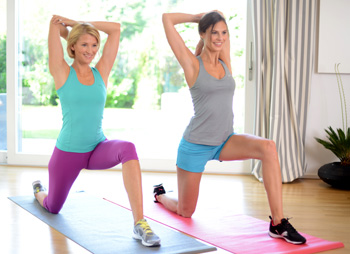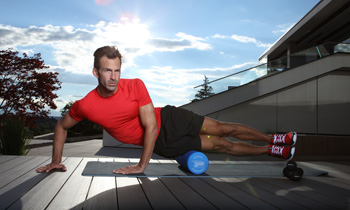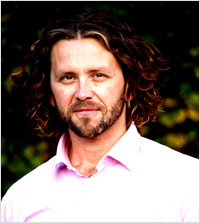Payment Methods


During the last decades, there has been quite a few controversial debates about the subject of stretching. Different scientific discoveries often influenced the overall opinion about stretching to be diametrical. First of all, we have to differentiate between 2 motivations of stretching; there is stretching before or during a workout and there is a post workout stretch. Pre-workout stretch serves as an injury-preventer and perpetrator for effective training. Stretching after a workout has more of a long term health function. In this article we will discuss stretching as a health relevant subject.
When we are born our ligaments, muscles and nerves are wonderfully long and stretchable. Without any difficulty we can comfortably reach our ears with our feet with a giggling grin. As we get older ligaments and muscles tighten as get shorter, simply because our bodies are programmed to save resources. Our stretching ability is automatically matched to the range of movement. Often this is the cause for postural deformity. The restriction of movement often leads to relieving postures, which in turn shorten muscles, ligaments and nerves. A viscous cycle starts, which can cause pain and health-related derogation over time. The results can be severe back and joint problems. Maintaining your flexibility and range of movement has a direct impact on your health and wellbeing.
According to published research in the Journal of Strength and Conditioning Research, stretching significantly enhances the ability to hold balance. There were tangible differences between a group of students, surfers and a test group- which didn't stretch. Apparently our musculoskeletal system moves "better" and "limber" when muscles and ligaments can move to their full extent without being limited by these shortenings. Balance also becomes more important as you grow older. As bones age, they get more rigid and have the tendency to break more easily. Stretching reduces the risk of injuries in two ways: The ability of balance reduces the risk of fall in the first place and even if the body falls, it can adjust more quickly and absorb the impact of the fall better.

Stretching should be performed directly after the workout or training. All muscles are now well supplied with blood and so ensure the lowest possible risk of injury. The joints have a good fluid balance and are well "lubricated," which also counteracts any straining.
As mentioned above, there are different ways to stretch. These range from toning and dynamic stretching (which is executed in a spring like movement) to long and holding stretches (which are best done in a relaxed fashion). For healthy prophylactic stretching, it is important to perform the stretch slowly and hold it for more than 10 seconds.
The objective here is to gain a wider range of movement; therefore this information that the body needs a wider range to move can "sink in" to the muscles and ligaments first. Stretching is therefore best performed slowly and with control.
While lengthening, stay in that position and imagine breathing into the parts of your body where you can feel the stretch. Don't hold pasture which strains your joints. As a rule of thumb, all pastures are fine, which can be done in a 'natural' fashion. Therefore the joint shouldn't be bent up to its marking and should have enough range of movement left. Breathe and feel into the stretch. After 3-4 breaths your muscles will soften and "let go" of your ligaments. With that, the fascias are starting to loosen up. Fascias are part of the connecting tissue between the muscles, ligament, bone, arteries and nerves. Often an underestimated reason for pain is "agglutination" between these structures, which also limits the range of movement. Through slow and thorough stretching, the agglutinations are loosened. If you have problems with this, it is good advice to see an Osteopath. These physicians are specialized in making these agglutinations consistent again, in order to gain back flexibility.

Nerves! Should you encounter a severe pain after and while stretching, it could be possible that you have stretched a nerve too much. Nerves are not flexible! They have a specific length which most of the time lets you move to the full extend, over time these can shorten. More specifically, nerves are woven into the fascias and held into place. Be careful with them. Nerve-pain can be mistaken with the sensation of sore muscles. Most of the time specific nerve pains can feel cold like ice while sore muscles mostly feel warm because of blood soaking.
Yogis can become easily annoyed, when you call Yoga a stretching routine- Of course! Yoga is much more then stretching, work and recreation. However, positive side-effects are one of the reasons why this spiritual Indian practice became so popular in the West. While doing Yoga and resting in the so called "asanas," the stretching is performed very gentle. It also involves breathing as a main technique. This in itself can be a powerful health-practice. As mentioned above, breathing "into" the muscles relaxes them better and helps give up their toning. Yoga is probably most effective and healthiest way to keep up your range of movement and flexibility. You will do yourself a big favor by just adopting some of the principles and integrating them into your routine. Your health will profit from it!
Here are the highlights of what to keep in mind while stretching:
